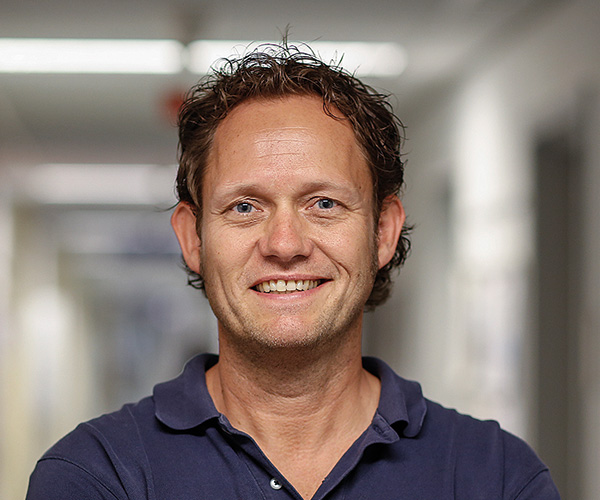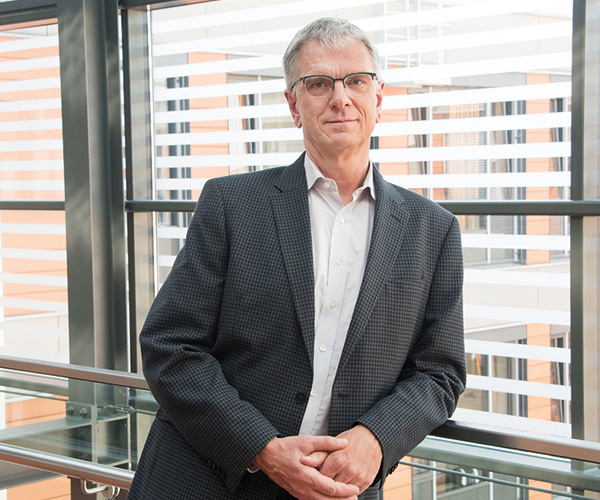Home institution
School for Cardiovascular Disease in Maastricht, CARIM (Maastricht, Netherlands)
Supervisory team
primary: Prof. Dr. Leon Schurgers (CARIM), secondary: Prof. Dr. Wolfram Ruf (CTH), tertiary: Dr. Stefan Kauschke (Boehringer Ingelheim)
Project locations
CARIM (Maastricht, Netherlands), CTH (Mainz, Germany), Boehringer Ingelheim (Biberach, Germany)
Joint PhD Degree
Universities of Maastricht and Mainz
Project details
Vascular smooth muscle cell (SMC) phenotype switching from a contractile to a synthetic morphology is an established, but not well understood contributing pathway in the initiation and progression of atherosclerosis. Multidisciplinary approaches are now required to decipher how the blood components interact with the endothelium and SMC in inflammation and thrombosis. The work hypothesis is that 'vascular outside-in' coagulation-induced effects lead to inflammatory arterial wall remodelling and enhanced atherothrombosis.
Using in vivo thrombosis models with a variable extent of inflammation and ex vivo functional assays in combination with imaging modalities of vascular function, we aim to determine key mechanisms of vascular signalling through PAR isoforms and TF. ESR3 will assess how coagulation activation stimulates SMC inflammation and ensuing remodelling of the aortic vessel wall. Mice, in which a loss of SMC can be induced, will be used to prompt vessel wall remodelling, while hyperlipidemic mice with synthetic SMC will be used to provoke atherosclerotic remodelling. Vascular tone and plaque progression will be measured in vivo using tonometry and intravital microscopy, and ex vivo using myography and multiphoton microscopy. Phenotypic switching of SMC is assessed by PET-CT imaging and histology. At CARIM, ESR3 will use the socalled vessel-on-a-chip model for determining the thrombogenic consequences of inflammatory SMC switches. Possible pharmacological inhibition will be investigated in collaboration with Boehringer Ingelheim. At the second host CTH, mice with dysfunctional PAR1/2 signalling will be used to assess the blood cell and coagulant processes involved in SMC remodelling. ESR3 will then assess the importance of the coagulation and signalling pathways on inflammatory arterial remodelling and thrombogenicity. To evaluate for possible improvement of antithrombotic therapy, SMC on biochips will be subjected to plasma from patients with low/high inflammation and anticoagulants.
References
- Kapustin AN, Schoppet M, Schurgers LJ, Reynolds JL, McNair R, Heiss A, Jahnen-Dechent W, Hackeng TM, Schlieper G, Harrison P, Shanahan CM. Prothrombin Loading of Vascular Smooth Muscle Cell-Derived Exosomes Regulates Coagulation and Calcification. Arterioscler Thromb Vasc Biol. 2017 Mar;37(3):e22-e32
- Schurgers LJ, Spronk HM. Differential cellular effects of old and new oral anticoagulants: consequences to the genesis and progression of atherosclerosis. Thromb Haemost. 2014 Nov;112(5):909-17
- Patterson C, Stouffer G, Madamanchi N, Runge M. New tricks for old dogs: nonthrombotic effects of thrombin in vessel wall biology. Circulation Res. 2001;88:987-997
Desirable student skills
- Laboratory skills such as cell culture, cell separation, blotting are essential. Flow cytometry, microscopy, and mass spectrometry analysis are desirable.
- Knowledge of cell behaviour, reactivity and phenotype is essential. Knowledge of vascular biology, inflammation and exosomes is desirable. Cell culturing, Western blotting, real time PCR, and ELISA are desirable.


